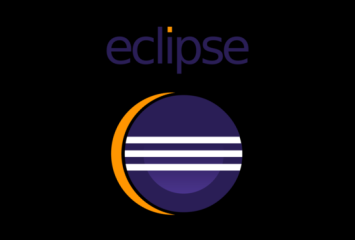

Introduction to Eclipse: Understanding what Eclipse is and its key features.
Installation: How to download, install, and set up Eclipse on your system.
Workspace Setup: Creating and managing workspaces, projects, and files.
Menus and Perspectives: Navigating Eclipse's interface, including menus, toolbars, and perspectives.
Views and Editors: Using different views (e.g., Project Explorer, Package Explorer) and editors for various file types.
Creating Projects: Setting up Java projects, packages, classes, and interfaces.
Writing and Editing Code: Writing, editing, and managing Java code within Eclipse.
Building and Running Projects: Compiling and running Java applications, and managing build configurations.
Debugging: Debugging Java applications using Eclipse's debugging tools.
Plugins and Customization: Installing and using Eclipse plugins, and customizing the IDE to suit your needs.
Understanding Eclipse IDE: Learn the basics of the Eclipse Integrated Development Environment (IDE) and its interface.
Project Creation: Gain skills in creating and managing projects within Eclipse.
Code Writing and Editing: Learn how to write, edit, and manage code effectively using Eclipse.
Debugging: Understand debugging techniques to identify and fix issues in your code.
Using Plugins: Learn how to install and use various Eclipse plugins to enhance your development environment.
Customization: Customize Eclipse to meet your specific development needs.
Hands-On Practice: Engage in practical exercises to apply what you've learned in real-world scenarios.
Introduction to Eclipse
Overview of Eclipse IDE
Key features and benefits
Installation and Setup
Downloading and installing Eclipse
Setting up the development environment
Navigating the Interface
Understanding menus, toolbars, and perspectives
Managing workspaces and projects
Creating and Managing Projects
Setting up new projects
Organizing packages and classes
Writing and Editing Code
Using the code editor
Writing and editing Java code
Building and Running Projects
Compiling and running applications
Managing build configurations
Debugging
Setting breakpoints and watches
Debugging techniques and tools
Using Views and Editors
Exploring different views (e.g., Package Explorer, Problems)
Customizing the interface
Plugins and Extensions
Installing and using plugins
Enhancing Eclipse functionality
Version Control Integration
Integrating Git or other version control systems
Managing code repositories
Advanced Features
Code completion, templates, and snippets
Refactoring and searching code
Best Practices and Tips
Productivity tips and best practices
Customizing Eclipse for efficient workflows
Engineers, Technicians & Administrative